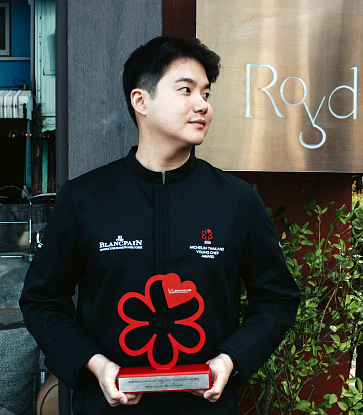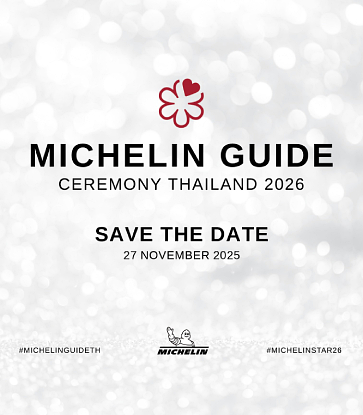You’re at a wonderful restaurant where a delicious dish reveals a beautiful bowl or plate as mesmerising as the meal. Then, you turn the ceramic tableware over (after finishing the course, of course!) to see the maker’s stamp just to find out where the plate comes from.
The saying, “You eat with your eyes first,” couldn’t ring truer. This is the reason chefs seek to create meals that are not only delectable, but cleverly executed and aesthetically attractive as well.

Tracing the origins of Lampang ceramics
Most people in Thailand think that these ceramics originated in Lampang ages ago. However, this is not the case. The history of Thai ceramics began later and closer to Bangkok, across the Chao Phraya River in the Chinese community in Wongwian Yai, Thon Buri. They established ceramics production there to make Rooster Brand dishware locally, as a more affordable option to Chinese imports during World War 2. The war had disrupted trade, thus making them extremely expensive.
So, how did these dishes, which actually originated in China, end up as the iconic products now famously from Lampang and exported to over 70 countries around the world?
The official Thai Rooster Brand dish boom began around 1955 when Simyu Chin discovered high-quality kaolin clay in Ban Pang Ka, Chae Hom District in Lampang. As these were large deposits, he founded a factory there and began producing the Rooster Brand dishware. At first, he only sold the products in Thailand, including plates, dipping dishes, and dessert bowls fired in dragon kilns. These kilns harken to an ancient Chinese method of ceramic making that is carried on today in Lampang. The Rooster Brand may be steeped in tradition, but these ceramics have grown and evolved from their cultural heritage of bowls and plates to contemporary houseware and artistic and decor.

A chef’s favourite
In Thailand’s culinary world, especially at the fine-dining tables of MICHELIN Starred restaurants, you will find Lampang ceramics the favoured choice. Not only are they made from the highest quality kaolin in Thailand, but the designs are also as creative as the chefs who choose them.
More importantly, Rooster Brand dishware from Lampang has been recognised as a Geographical Indication (GI). This means that they have specific characteristics, from the production process to design, that cannot be duplicated or claimed elsewhere. (Think of how sparkling wine can only be called “Champagne” if it is made in the Champagne region.) This includes the unique mineral compositions and textures of the white kaolin and black ball clays, which make the dishes and bowls strong and sturdy, as well as the distinct, hand-drawn designs of roosters, peonies, and banana trees, blending Thai and Chinese cultural influences.
“Thailand creates some of the most beautiful ceramics in the world. At Canvas, we use handmade dishware from Cone No. 9 in Lampang. They’ve just expanded to Bangkok. The dishes are such high quality and serving on them complements our food,” explained American Chef Riley Sanders of one MICHELIN Starred Canvas in Bangkok.

Sharing the wealth with visitors
There was a time when Rooster Brand dishware was headed for extinction as people turned to cheaper, sturdier plasticware. But then, nostalgia started trending, and people began seeking out the Rooster Brand, making the items popular again.
The story of Rooster Brand’s past and comeback is on exhibit at the Dhanabadee Ceramic Museum. It is the first museum to tell the history of ceramics in Lampang, where visitors can not only observe the production process, but can also create their own Lampang dish or bowl as a unique souvenir to take home. Another institute dedicated to the area’s heritage is the Lampang Learning Museum or Lampang Museum. This new museum, converted from the old town hall, tells stories about the many facets of “The People, The Place, Lampang”, including how Rooster Brand ceramics are woven into the fabric of Lampang’s communities, through modern interactive displays and exhibits.
But has the exceptional handiwork endured through the generations?
“The factories in Lampang offer an amazing selection of designs. A craftsman once told me that they send their high-quality plateware to world-class restaurants in Scandinavia,” said Chef Sujira “Aom” Pongmorn of Saawaan (one MICHELIN Star) last year.
The Texan chef from Canvas added, “I learn about the different styles of ceramics by talking to talented craftspeople. I enjoy going to see the production and finding new products that would suit my latest menus. How I serve and present my food is often inspired by these ceramic dishes.”

The fame and popularity of the Rooster Brand and other ceramics in Lampang has borne a ceramic route for visitors, which has also been an economic boon for local communities. Counting factories large and small, there are around 150 locations. There is also an OTOP (One Tambon, One Product) village in Ko Kha District where you can find ceramic products at every house as well as a homestay that immerses visitors with experiences in creating ceramics with local artisans. The annual fair is also a draw as the country’s largest ceramics market. For more shopping opportunities, Kad Kong Ta Walking Street features works from contemporary artists and craftspeople.
Thailand is full of interesting places to explore, showcasing exceptional local craftsmanship. Sometimes that artistry makes its way to the world stage; such as, through the spotlight of talented chefs at MICHELIN Starred restaurants presenting delicious dishes to delight diners.
Who’d have thought that a journey could begin on a plate?

During your travels, don’t forget to wear a mask, wash your hands, and protect your health. Also, be on the lookout for the SHA logo. SHA is a project involving the Tourism Authority of Thailand (TAT), Ministry of Tourism and Sports, Ministry of Public Health, and others. SHA certification verifies the safety, hygiene, and the sanitation quality of the products and services of Thai businesses in order to ensure a safe travel experience for all travellers.
For more information about this project, please visit thailandsha.tourismthailand.org. Or get more information for your trip with the TAT Call Centre on 1672 or on Facebook at the TAT Contact Centre.
Hero image: © Saawaan






















